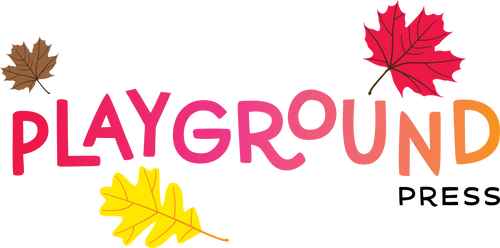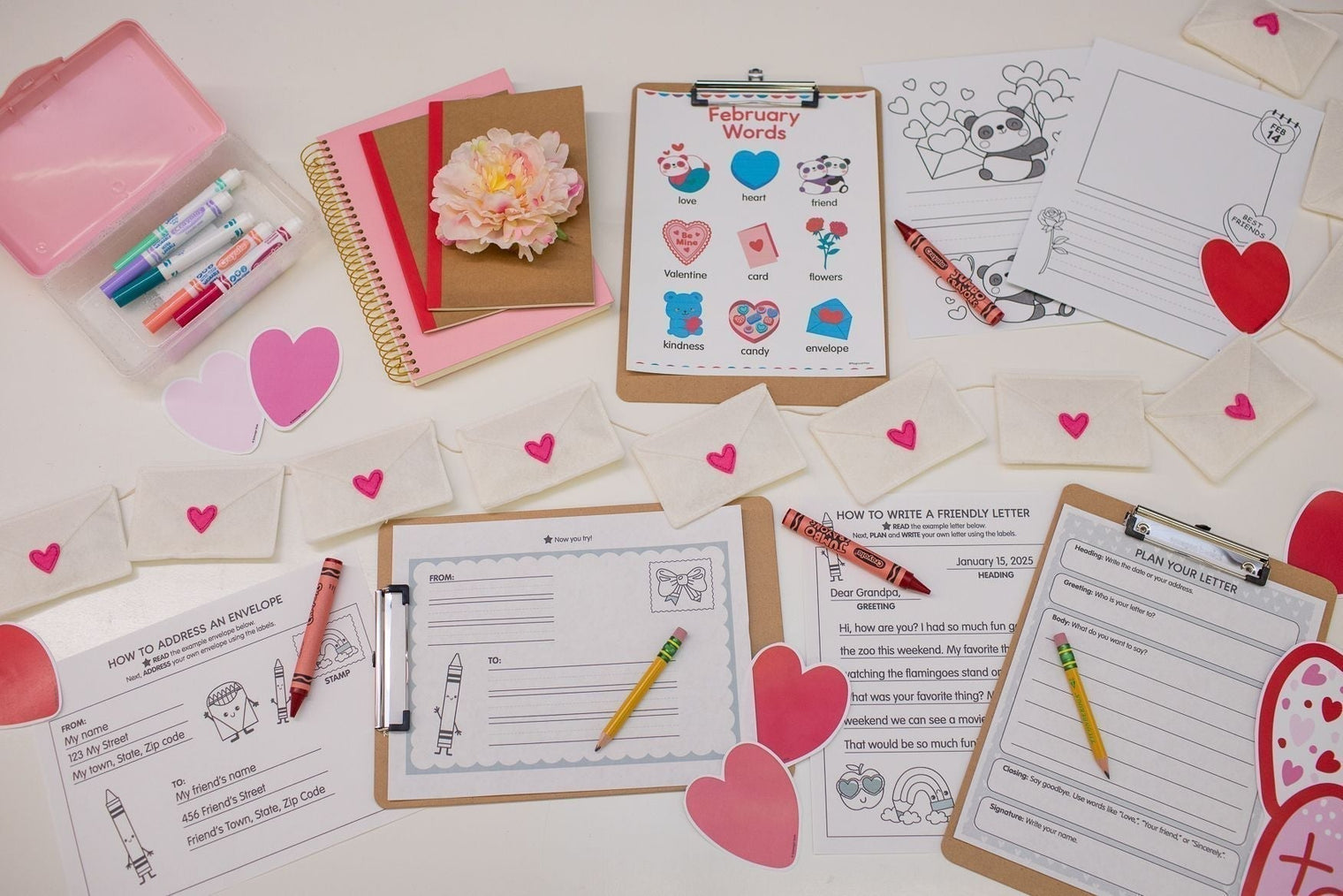Creating a writing center at home doesn’t have to be complicated. In fact, it’s a fantastic way to foster your child’s creativity, boost their literacy skills, and encourage them to enjoy the writing process. A home writing center doesn’t need to look like a school classroom, but it should provide the right materials and environment to inspire your little writer. Writing is also closely connected to reading, as children learn to make connections between letters, sounds, and word patterns. The more they practice writing, the better reader they become! So with that, here’s a simple guide to help you make the ultimate home writing center!
How to Make a Home Writing Center
Items to Include in a Home Writing Center
A home writing center should be an inviting and productive space with a few key items that will help your little writer. Here’s a list of materials you can include:
-
Alphabet Line and Posters: This helps children recognize letters and sounds, creating a visual reference for when they’re writing or sounding out words.

-
Word Posters: These can be personalized with words that are meaningful to your child—like names of favorite animals, family members, or simple everyday words they can use in their writing. You can change these throughout the year to keep things fresh and relevant.
-
Sight/Heart Words: Display common sight words (or "heart words") your child is learning. These are high-frequency words that children can’t always sound out easily but need to recognize by sight. Having these visible will help reinforce their reading and writing skills.

-
Writing and Drawing Tools: Having a variety of writing and drawing tools, such as pencils, erasers, markers, crayons, and colored pencils, will keep your child engaged. Art to match writing is super important! This supports the connection between creativity and writing—helping children express themselves in multiple ways.
-
Lined Writing Paper: Simple lined paper (or even pre-made worksheets with spaces for drawing) is great for beginners and can help them focus on letter size and word spacing.
-
A Name Tag with Your Child’s Full Name: This is a great way to help children practice writing their names, something they can focus on as they start developing writing habits in their home writing center.
-
Inspiration Section: Create a section in the home writing center where you can add items from around the house to inspire their writing. Think old envelopes to practice addressing mail, newspapers, magazines, even cards!
At first glance, this may seem more like a school writing center than a home writing center. But these items are crucial for helping beginner writers develop the skills they need to grow and gain confidence. The best part? With just a little creativity, you can transform this space into an exciting, fun place where writing feels less like a task and more like an adventure. This is where the good writing habits begin!
Tip:
When kids are first starting to write, encourage phonemic writing by having them stretch out the sounds they hear in words, rather than focusing on perfect spelling. For example, if they want to write the word, ‘pretzel’ they might spell it as 'prtzl', showing they're breaking down the sounds and representing them as they hear them!
Section 2: Writing Ideas for Each Month
Switching out materials in your home writing center each month or season keeps things exciting and relevant for your child! Two of the easiest ways to keep things fresh are by hanging word posters that relate to the current month’s themes (e.g., holidays, seasons, or special events), and by adding some items into the center to inspire different types of writing (e.g., magazines, newspapers, letters). You can also use different writing prompts for each month, to spark ideas to write about. Here are some open-ended writing prompts for each month:
January:
-
My heart is full of...
-
When I see snowflakes...
-
On a cold winter day, I like to...
-
If I could make the snow fall anywhere, it would be...
-
My favorite thing about winter is...
February:
-
I love my friends because...
-
If I could send a Valentine to someone, I would say...
-
When I see hearts, I feel...
-
The best part of winter is...
-
My favorite way to show kindness is...
March:
-
When I see flowers growing, I feel...
-
My favorite thing about spring is...
-
If I were a butterfly, I would...
-
The best thing about rainy days is...
-
I think the first sign of spring is...

April:
-
If I could jump in a puddle, I would...
-
I love it when it rains because...
-
If I were a flower, I would...
-
A rainbow makes me feel...
-
When I hear thunder, I think...
May:
-
I love my mom because...
-
If I could plant anything in a garden, I would plant...
-
The best part of spring is...
-
If I could spend the day in a flower garden, I would...
-
My favorite thing to do outside in May is...
June:
-
My heart is full of sunshine because...
-
The best thing about summer is...
-
If I could play outside all day, I would...
-
When I hear birds singing in the morning, I feel...
-
On a warm summer day, I like to...
July:
-
When the fireworks go off, I feel...
-
The best part of a summer picnic is...
-
If I could spend the day at the beach, I would...
-
On a hot day, the thing I like to do most is...
-
My favorite summer memory is...
August:
-
If I could have an ice cream party, I would...
-
On a hot summer day, I like to...
-
The best thing about summer is...
-
If I could be any animal, I would be...
-
I feel happy when...
September:
-
When I go back to school, I feel...
-
The best part of fall is...
-
If I could spend the whole day with my friends, we would...
-
I love to learn about...
-
When I see the leaves change colors, I feel...
October:
-
I love Halloween because...
-
When I see pumpkins, I feel...
-
If I could be any Halloween character, I would be...
-
The best part of fall is...
-
When I see spooky decorations, I feel...
November:
-
I am thankful for...
-
When I think about Thanksgiving, I feel...
-
The best part of fall is...
-
I love it when the leaves fall because...
-
On a chilly day, I like to...

December:
-
When I see holiday lights, I feel...
-
The best part of winter is...
-
If I could give a gift to anyone, I would give...
-
When I think about snow, I feel...
-
I love the holidays because...
These open-ended prompts allow children to explore their feelings, think deeply, and provide quality bonding time between you both as you talk through these topics! It is also important to encourage your child to draw a picture to match their writing because it strengthens comprehension and the connection between words and visuals.
Ways to Make Writing Developmentally Appropriate for Any Level Your Child Is At
Writing can look very different depending on where your child is in their development. The good news about writing for kids is that beginning the process can look very different for each writer and there is no ‘wrong’ way to begin getting comfortable with writing! Here are a few tips to build your writers confidence, and make writing fun, and developmentally appropriate for any level:
-
Ask your child the prompt and have them draw a picture to match their answer. This helps them begin connecting words and images and gives them a visual outlet to express their thoughts.
-
Write the prompt for them, discuss what you wrote, and then help your child sound out and write one or two words to complete it. This encourages them to take ownership of the writing process, while also giving them a safe space to experiment with new words and sounds.
-
Write the sentence for your child complete with their answer to the prompt, then let your child trace your words while adding their own illustration! (Bonus if you help them sound out each word while tracing!) This is a great way to reinforce letter formation and word recognition.
By adjusting the level of involvement and support based on where your child is in their writing journey, you can keep the writing process engaging and appropriate for their developmental stage, while keeping the confidence for them to continue wanting to write!

Your Turn!
Learning how to create a home writing center in your space is a great way to inspire your child to write and develop their literacy skills in a fun and supportive environment. Writing is a key component in building reading skills, as children continue to make connections between letters, sounds, and word patterns. The more they write, the more they practice blending sounds, recognizing letter shapes, and building fluency, which directly supports their ability to read and comprehend text! In creating a home writing center with the right materials, prompts, and developmental strategies- your child will not only become a confident and creative writer but also strengthen their reading abilities, setting a strong foundation for future literacy success!
Show us your home writing center set up by tagging #PlaygroundPressKids on social media!

